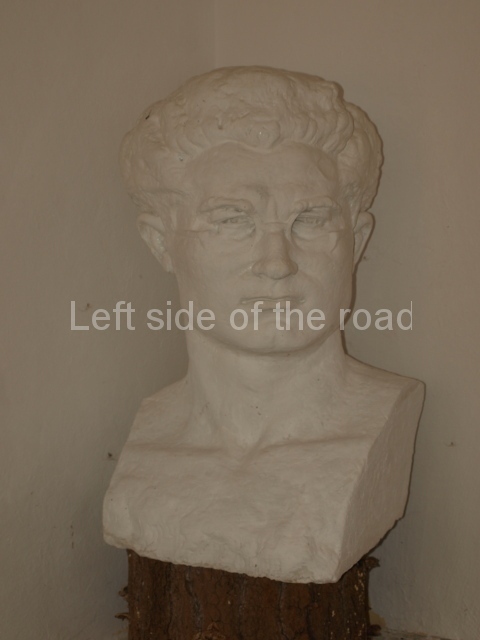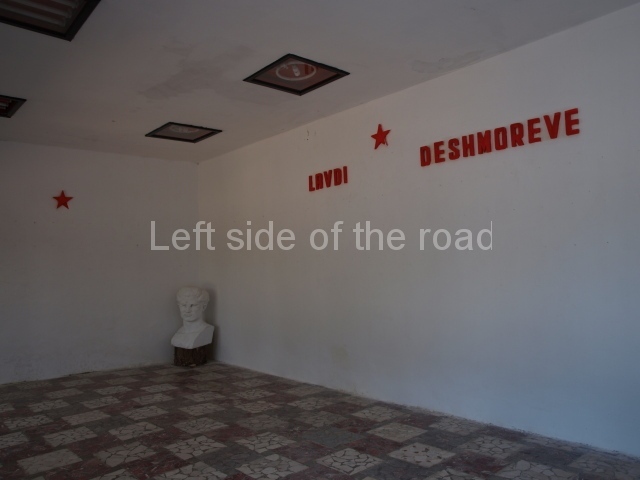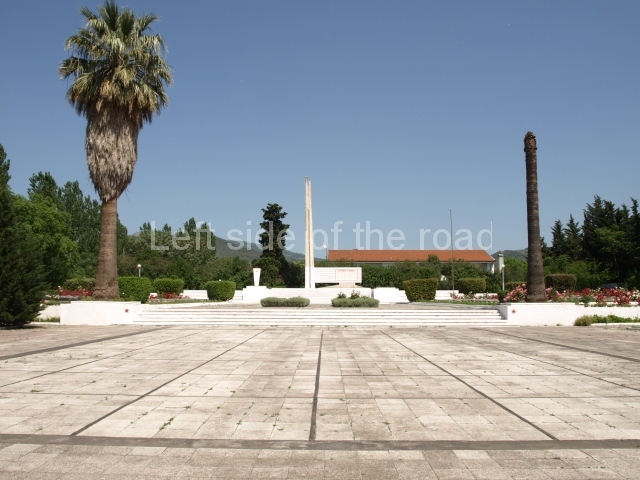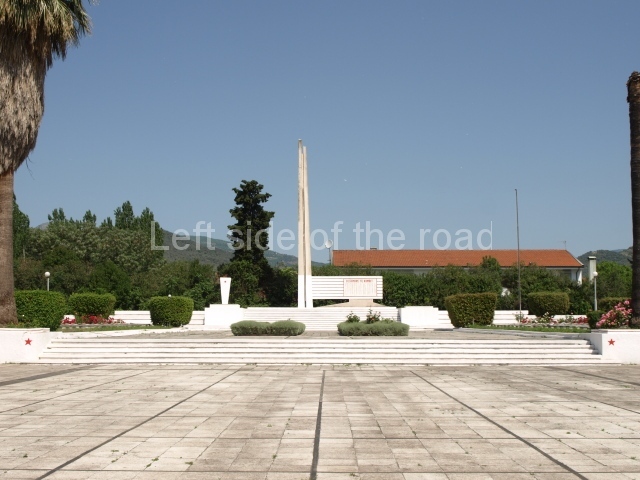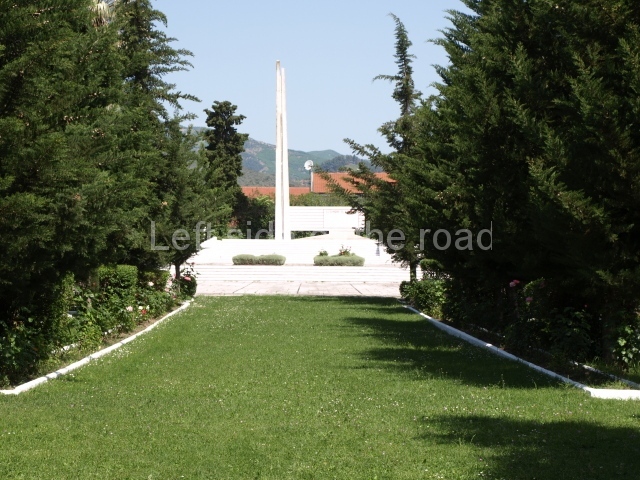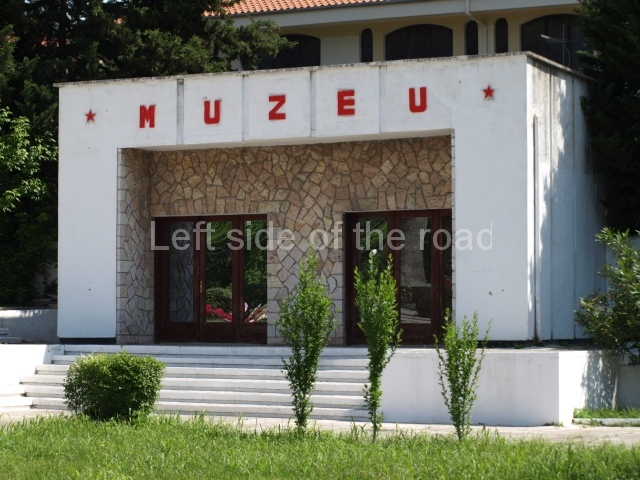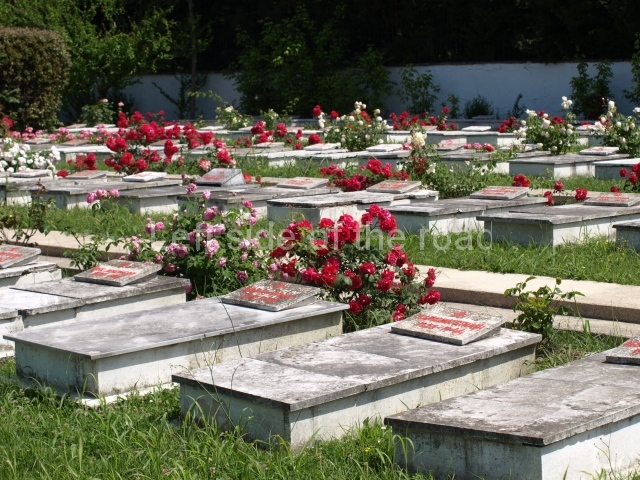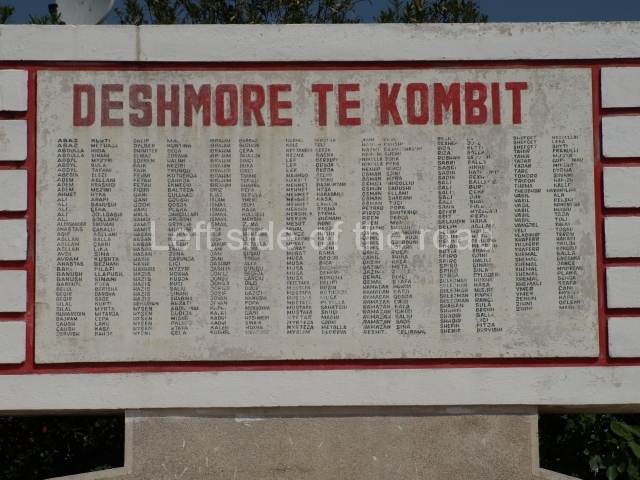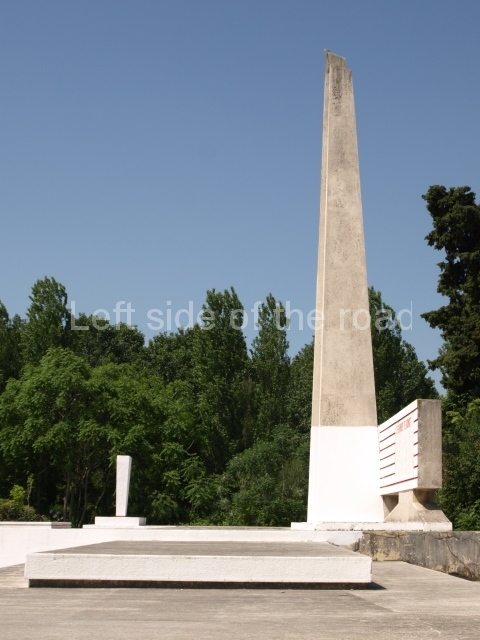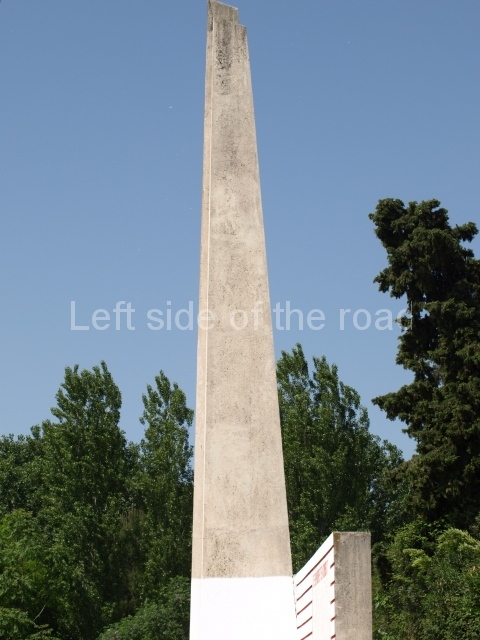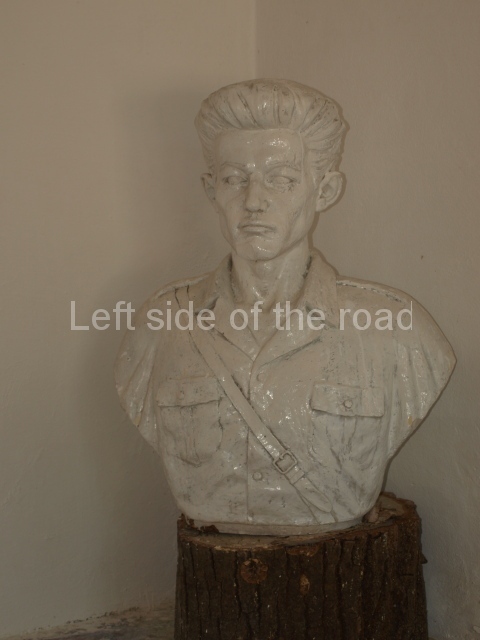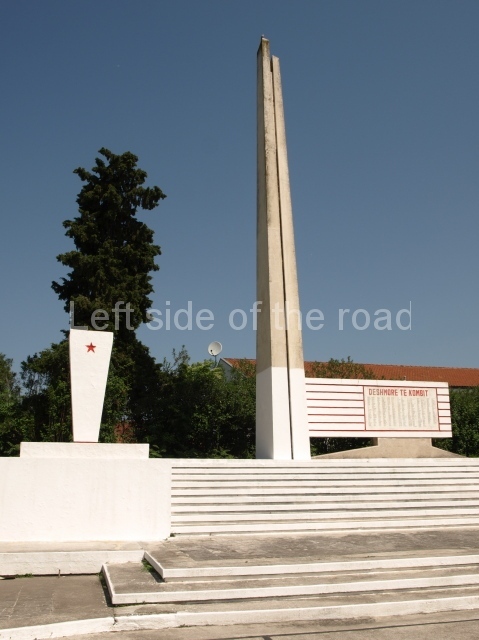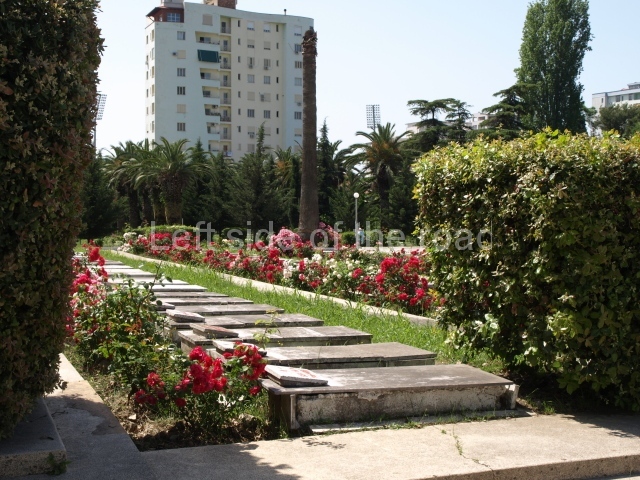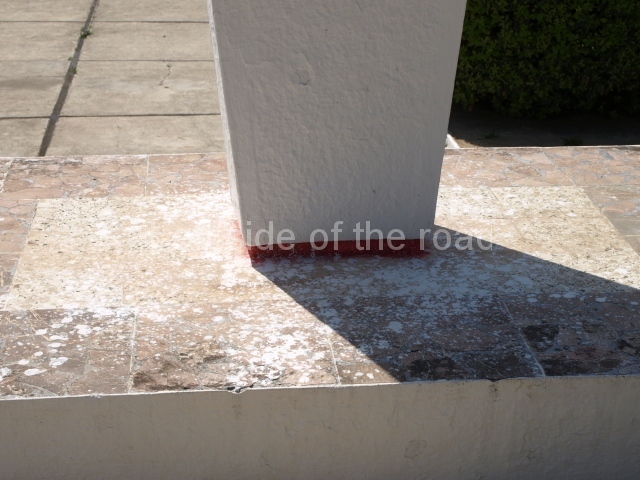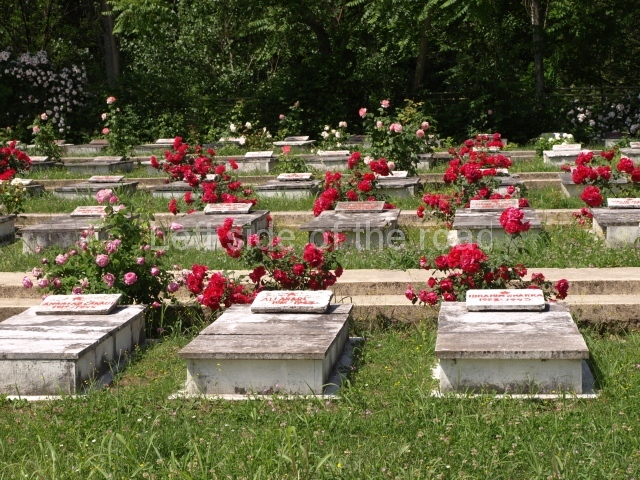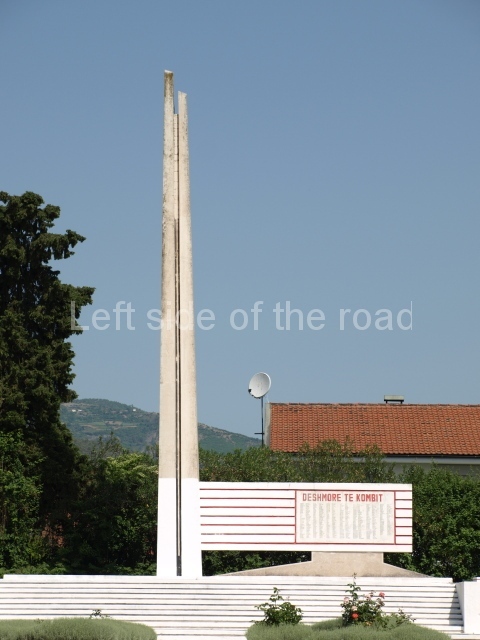 More on Albania …..
More on Albania …..
View of the world
Ukraine – what you’re not told
Documents of the Party of Labour of Albania
These pages include documents and decisions of the Central Committee of the Party of Labour of Albania and other state organisations of the Albanian state. Also there are articles that were originally published in ‘Zeri i Popullit’, the official newspaper of the CC of the PLA.
I apologise if some of the reproductions are a little messy. The paper used in the 1960/70s does not age well and I hope that the ‘staining’ doesn’t cause any problems. As far as I’m concerned the text (which, after all, is the most important) is still clear and legible.
The ideas of Marxism-Leninism will triumph on the Revisionism, no publisher, Tirana. 1962, 227 pages.
Fiftieth Anniversary of Albanian Independence, no publisher, Tirana, 1962, 71 pages. Contains three speeches by Enver Hoxha, Mehmet Shehu and Haxhi Lleshi on the occasion of the 50th Anniversary of Albanian Independence in November 1962.
Togliati’s ‘Testament’, the crisis of Modern Revisionism and the fight of Marxist-Leninists, reproduced from Zeri i Popullit daily, November 13, 1964, Naim Frasheri Publishing House, Tirana, 1964, 43 pages.
Constitution of the People’s Republic of Albania, the Albanian Committee for Cultural Relations and Friendship with Foreign Countries, Tirana, 1964, 48 pages. The Constitution that was adopted in January 1946 and which was in place until it was changed in 1976 at the 7th Congress of the Party of Labour of Albania.
The Belgrade Revisionist Clique – Renegades from Marxism-Leninism and Agents of Imperialism, Naim Frasheri Publishing House, Tirana, 1964, 325 pages. A series of articles first published in Zëri i Popullit, the official newspaper of the CC of the PLA, relating to the counter-revolutionary activities of the Yugoslav Revisionists. The articles cover the period from January 1962 to September 1963.
The Facts about Soviet-Albanian Relations, Naim Frasheri Publishing House, Tirana, 1964, 165 pages. Documents and letters from the period 1961-63 when the Khrushchevite revisionists of the Soviet Union abandoned Albania and in the process the revolutionary road of Marxism-Leninism.
Marxist-Leninist Ideology will certainly overcome Revisionism – Volume II, Naim Frasheri Publishing House, Tirana, 1964, 462 pages. A series of articles, first published in Zëri i Popullit, the official newspaper of the CC of the PLA, relating to the Modern Revisionism in the Soviet Union, Yugoslavia and other European ‘Communist’ Parties. The articles cover the period from May 1962 to June 1963.
Twenty Years of Socialism in Albania, Naim Frasheri Publishing House, Tirana, 1964, 127 pages.
Communist and Workers’ Parties and Marxist-Leninist Groups greet the Fifth Congress of the Party of Labour of Albania, held in Tirana from November 1 to November 8, 1966, Naim Frasheri Publishing House, Tirana, 1966, 207 pages.
The Soviet Revisionist clique works at a quick pace towards the re-establishment of capitalism, Naim Frasheri Publishing House, Tirana, 1967, 35 pages.
Let the storm of Revolution burst out powerfully, reproduced from Zeri i Popullit daily, May 16th 1968, Naim Frasheri Publishing House, Tirana, 1968, 39 pages.
The Budapest Carnivals, Naim Frasheri Publishing House, Tirana, 1968, 33 pages.
The Czechoslovak Socialist Republic caught in the grip of Soviet Revisionist invaders, reproduced from Zeri i Popullit daily, November 19, 1968, Naim Frasheri Publishing House, Tirana, 1968, 22 pages.
The working class in Revisionist countries must take the field and re-establish the Dictatorship of the Proletariat, reproduced from the ‘Zeri i Popullit’ daily, March 24, 1968, Naim Frasheri Publishing House, Tirana, 1968, 40 pages.
The Soviet Revisionists and Czechoslovakia, reproduced from the ‘Zeri i Popullit’ daily, July 24, 1968, Naim Frasheri Publishing House, Tirana, 1968, 31 pages.
Soviet-US Alliance at work against the Czechoslovak people, reproduced from Zeri i Popullit daily, May 23rd 1969, Naim Frasheri Publishing House, Tirana, 1969, 16 pages.
The demagogy of the Soviet Revisionists cannot conceal their traitorous countenance, reproduced from the ‘Zeri i Popullit’ daily, January 10, 1969, Naim Frasheri Publishing House, Tirana, 1969, 50 pages.
Open fire on Revisionist betrayal, articles from ‘Zeri i Popullit’ daily, organ of the Central Committee of the Party of Labour of Albania, Naim Frasheri Publishing House, Tirana, 1969, 68 pages.
Resolution of the CC of the PLA and the Council of Ministers of the PRA on Proclaiming the 1969 Year as a jubilar year of the 25th Anniversary of the Liberation of the Fatherland and of the Triumph of the People’s Revolution, no publisher, Tirana, 1969, 4 pages.
Military Pressure – Basis of the Political Dictate and Blackmail of the Soviet Revisionist Leaders, reproduced from the April 11th 1969 issue of ‘Zeri i Popullit’ daily, Naim Frasheri Publishing House, Tirana, 1969, 22 pages.
The Congress of capitalist restoration and Social-imperialism, reproduced from the ‘Zeri i Popullit’ daily, April 17, 1971, Naim Frasheri Publishing House, Tirana, 1971, 33 pages.
Some questions of Socialist Construction in Albania and of the struggle against Revisionism, Naim Frasheri Publishing House, Tirana, 1971, 229 pages. Presentations given at the National Conference of Social Studies in Tirana in November 1969, on the occasion of the 25th Anniversary of the founding of the People’s Republic. Includes contributions by Ramiz Alia and Nexhmije Hoxha.
An historic victory of Marxism-Leninism over Revisionism, reproduced from the ‘Rruga e Partise’, January 5, 1971, Naim Frasheri Publishing House, Tirana, 1971, 59 pages. On the tenth anniversary of the Meeting of the 81 Communist and Workers Parties in Moscow in 1961.
The 6th Congress of the Albanian Labour Youth Union – held in Durres on October 23, 1972, Naim Frasheri Publishing House, Tirana, 1972, 100 pages.
Culture People’s Heritage, Naim Frasheri Publishing House, Tirana, 1973, 88 pages. A review of Albania’s Cultural Heritage and how, after the liberation of the country from Fascism in 1944, the people were able to appreciate this historical treasury for the first time.
Albania’s Foreign Policy, speech to the General Assembly of the United Nations given by Foreign Minister Nesti Nase on October 2nd 1972, Albania Report, New York 1973, 15 pages.
A new victory of the policy of the Party of Labour of Albania in the uplift of the general well being of the people, 8 Nëntori Publishing House, Tirana, 1976, 25 pages. Decision of the CC of the PLA and the Council of Ministers of the People’s Republic of Albania on the reduction of higher wages, on some improvements in the wage system of working people and on the furthering narrowing of differences between town and country
A Social Democratic Congress of the French Revisionists, editorial of Zeri i Popullit, organ of the Central Committee of the Party of Labour of Albania, February 21, 1976, 16 pages.
The Congress of the Soviet Revisionists – a Congress of Social-Imperialist Demagogy and Expansion, 8 Nëntori Publishing House, Tirana, 1976, 24 pages. Editorial of Zeri i Popullit, organ of the Central Committee of the Party of Labour of Albania, March 12, 1976.
Draft Constitution of the People’s Republic of Albania, 8 Nëntori Publishing House, Tirana, 1976, 42 pages. The Albanian people have found constant inspiration in the great doctrine of Marxism-Leninism, under the banner of which, united round the Party of Labour and under its leadership, they are carrying forward the construction of socialist society to pass over, later, gradually to communist society.
A meeting that sealed Revisionist betrayal, editorial of ‘Zeri i Popullit’, organ of the Central Committee of the Party of Labour of Albania, July 7, 1976, 8 Nëntori Publishing House, Tirana, 1976, 16 pages.
Two Opposing Lines In The World Trade Union Movement, Filip Kota, Gamma Publishing, New York, 1976, 178 pages. The difference between the role of the Trade Unions in capitalist countries and the part they play in the construction of Socialism in Albania. Reprint of original published in Tirana in 1974.
The Constitution of the Party of Labour of Albania, adopted at the 3rd Congress of the PLA (including amendments made at the 4th, 5th, 6th and 7th Congresses of the PLA), 8 Nëntori Publishing House, Tirana, 1977, 64 pages.
A new step in the struggle against opportunism, reproduced from the newspaper ‘Zeri i Popullit’, organ of the CC of the PLA, November 22, 1977, 8 Nëntori Publishing House, Tirana, 1977, 19 pages.
The Albanian people have been and are with the just cause of the peoples, speech of Comrade Nesti Nase, head of the Delegation of the PSR of Albania at the 32nd Session of the General Assembly of the UNO, October 6, 1977, 8 Nëntori Publishing House, Tirana, 1977, 22 pages.
‘Eurocommunism’ or undisguised Revisionism, article from ‘Zeri i Popullit’, organ of the CC of the PLA, dated December 4, 1977, 8 Nëntori Publishing House, Tirana, 1977, 24 pages.
The Party of Labour of Albania on the Building and the Life of the Party, Part 1, Part 2. (This booklet is reproduced here in two parts due to file size.) 8 Nëntori Publishing House, Tirana, 1977, 312 pages. A selection of Resolutions, Documents and Articles produced between the first days of the Party in November 1941 until February 1972. taken from the Party archives and from the Collected Works of Enver Hoxha.
The Ideas of the October Revolution are defended and carried forward in the struggle against modern revisionism, speech delivered at the Commemorative Meeting on the Occasion of the 60th Anniversary of the Great Socialist October Revolution (November 7, 1977), by Hysni Kapo, Member of the Politburo of the Party of Labour of Albania, 8 Nëntori Publishing House, Tirana, 1977, 46 pages.
Some Fundamental Questions of the Revolutionary policy of the Party of Labour of Albania about the Class Struggle, by Nexhmije Hoxha, Director of Marxist-Leninist Studies at the Central Committee of the Party of Labour of Albania in 1977, 8 Nëntori Publishing House, Tirana, 1977, 67 pages.
Some fundamental questions of the class struggle, Nexhmije Hoxha, November 8th Publishing House, Toronto, 2022, 90 pages.
The Theory and Practice of Revolution, editorial of the ‘Zeri i Popullit’, organ of the Central Committee of the Party of Labour of Albania, July 7, 1977, 8 Nëntori Publishing House, Tirana, 1977, 35 pages.
In the light of the ideas of the 7th Congress of the Party of Labour of Albania, Norman Bethune Institute, Toronto, 1977, 176 pages. Articles from ‘Zeri i Popullit’, organ of the Central Committee of the PLA, following the 7th Congress of the Party of Labour of Albania.
Photo Album of Albanian Life, Norman Bethune Institute, Toronto, 1977, 174 pages. A collection of photos showing the history of the Liberation War and the Construction of Socialism in Albania, up to 1977.
Chinese Warmongering and Hua Kuo-Feng’s Visit to the Balkans, editorial of the newspaper ‘Zeri i Popullit’, organ of the Central Committee of the Party of Labour of Albania, September 3, 1978, 8 Nëntori Publishing House, Tirana, 1978, 22 pages.
The Social Class Structure of the Working Class in Albania, 8 Nëntori Publishing House, Tirana, 1978, 218 pages. The working class is the principal force in the production of material blessing. It is the most progressive and the most revolutionary class of the society, whose historic mission is to overthrow capitalism from its foundations and to destroy it, to put an end to any exploitation of man by man, and to build socialist and communist society.
Letter of CC of the Party of Labour of Albania and the Government of Albania to CC of the Communist Party and the Government of China, July 29th 1978, 8 Nëntori Publishing House, Tirana, 1978, 56 pages.
Sino-American Alliance – a great threat to the peoples’ freedom, independence and security, editorials of the newspaper ‘Zeri i Popullit’, Organ of the Central Committee of the Party of Labour of Albania, 8 Nëntori Publishing House, Tirana, 1979, 27 pages.
Who Incites Hostility Amongst the Peoples of Yugoslavia, article from of the newspaper ‘Zeri i Popullit’, Organ of the Central Committee of the Party of Labour of Albania, April 23, 1981, 8 Nëntori Publishing House, Tirana, 1979, 29 pages.
Soviet Revisionism and the Struggle of the PLA to Unmask it, 8 Nëntori Publishing House, Tirana, 1981, 208 pages. This book comprises the reports and a number of papers read at the Scientific Session ‘Soviet Revisionism and the Struggle of the PLA to Unmask it’, organised by the Institute of Marxist-Leninist Studies at the CC of the PLA on 17-18 November, 1980. The reports and papers are published in an abridged form.
The Museum House of the Party, 8 Nëntori Publishing House, Tirana, 1981, 60 pages. The house in Tirana where the Albanian Communist Party (later the Party of Labour of Albania) was formed on 8th November, 1941. After liberation converted into a museum, currently with no public access.
Socialist Albania will always remain loyal to the great cause of Socialism and the Revolution, 8 Nëntori Publishing House, Tirana, 1982, 26 pages. Speech by Adil Çarçani at the 8th Session of the 9th Legislature of the People’s Assembly on the program and composition of the Council of Ministers, January 15, 1982.
The youth – a great force of the revolution, Htypshkronja e Re, Tirana, 1982, 46 pages. A book celebrating the role of Albanian youth in the War of Liberation and the Construction of Socialism.
The Counter-revolution within the Counter-revolution – about the events of the years 1980-1983 in Poland, Spiro Dede, 8 Nëntori Publishing House, Tirana, 1983, 303 pages. The Revisionists started the rot in Poland and opened the way for the out and out counter-revolutionary movement under the guise of trade unionism – Solidarity. Event since show the correctness of the Albanian analysis more than thirty years ago.
Report on the 8th Five-Year Plan (1986-1990), submitted to the 9th Congress of the Party of Labour of Albania by Adil Çarçani, 8 Nëntori Publishing House, Tirana, 1986, 89 pages.
Klasiket e Marksizem-Leninizmit – The Classics of Marxism-Leninism, 8 Nëntori Publishing House, Tirana, 1986, 156 pages. The text of this book is in Albanian but has been posted for its photos of the great leaders and founders of Marxism-Leninism – Karl Marx, Frederick Engels, Vladimir Lenin and Joseph Stalin.
Scientific conference on the Marxist-Leninist theoretical thinking of the Party of Labour of Albania and Comrade Enver Hoxha, October 3-4, 1983, November 8th Publishing House, Toronto, 2022, 224 pages.
The Great October Socialist Revolution, speech delivered to the Solemn Meeting Commemorating the 46th Anniversary of the Great October Socialist Revolution and the 22nd Anniversary of the Founding of the Party of Labour of Albania, Adil Çarçani, November 8th Publishing House, Toronto, 2022, 33 pages.
Qemal Stafa, his life and struggle, Nasho Jorgaqi, November 8th Publishing House, Toronto, 2024, 316 pages.
Problems of current world development, reports submitted to the Scientific Session held in Tirana, October 2-4, 1978, November 8th Publishing House, Toronto, 2024, 189 pages.
Although not technically statements by the PLA the following two documents were published in Tirana and therefore reflect the views of the Party at that time.
Joint Declaration of the Delegations of the Marxist-Leninist Parties of Latin America, taken from the newspaper ‘No Transar’, Organ of the Communist Party (ML) of Argentina, No 192, January 12, 1977, 8 Nëntori Publishing House, Tirana, 1977, 15 pages.
Joint Declaration of Marxist-Leninist Communist Parties of Europe – Communist Party of Germany (ML), Communist Party of Spain (ML), Communist Party of Greece (ML), Communist Party of Italy (ML) and the Portuguese Communist party (Reconstructed), reprinted from the newspaper ‘Zeri i Popullit’, central organ of the CC of the PLA, November 4, 1977, 8 Nëntori Publishing House, Tirana, 1977, 32 pages.
Three worlds theory, an opportunist version of the class struggle of the proletariat, Joao Amazonas, November 8th Publishing House, Ottowa, 2023, 69 pages.
More on Albania …..
View of the world
Ukraine – what you’re not told





